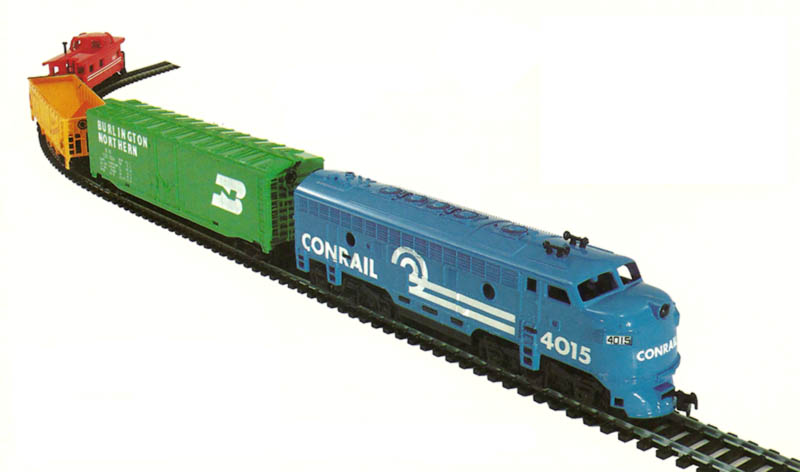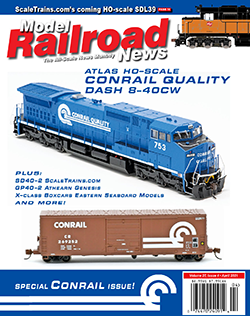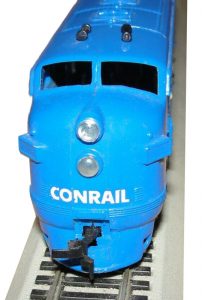 by Tony Cook
by Tony Cook
When Conrail started on April 1, 1976, the road inherited Penn Central’s varied diesel roster (which itself was made of New York Central and Pennsylvania Railroad veterans, as well as New Haven power added in 1969). Electro-Motive Division (EMD) F-units were not as common as they had been, but still in service on several Class 1 railroads in North America in the 1970s.
I consulted Diesel Era‘s May/June 2007 edition (Volume 18, Number 3) and Paul Withers’ “Conrail F/FP Cab Units” article. The publication documented Penn Central’s F-units from predecessors NYC and PRR in March/April 2007’s Diesel Era. Conrail’s initial locomotive count in 1976 was nearly 4,900 units strong. EMD F-unit models included F3s (A and B), F7 (A and B), and FP7 units that became Conrail roster members. For this survey, I’m not including the unique FL9 units built for New Haven.
The diverse collection of roads providing these bulldog-nose Fs included Erie Lackawanna, Reading, and Penn Central for a grand total of 160 examples of F-units. The majority of Conrail’s F-unit fleet was of New York Central heritage and painted in various Penn Central black schemes in 1976.
These first-generation F-units would not serve Conrail for long. Originally Conrail numbers kept F7A and a few F3As (from Erie Lackawanna) in the 1600-1800 series. F7B and a few F3Bs (again courtesy Erie Lackawanna) were placed in Conrail’s 3850-3874 series. FP7s from Penn Central (originally PRR) and a trio from Reading received 4300-series numbers.
Reference shows the F-unit fleet dwindled to quickly. By the close of 1977 F3s were retired and good percentage of FP7s were gone. At the end of 1978, Conrail had 30 F7As and a single F7B with all remaining FP7s sent to Southeastern Pennsylvania Transportation Authority. In 1979, a lonely pair of F7As (1733 and 1788) were all that was left active (with two additional F-units shown stored) of the original 160 F-units from Conrail’s April 1976 beginning. Early 1980 saw those F-units stricken from Conrail’s roster.
You’ll find black F-units with “CR” patched lettering (and a few Erie Lackawanna Fs with “CR” covering that road’s identification over its maroon, gray, and yellow livery) and there are a few that received Conrail blue paint. However, those uncommon blue Fs (including F7A 1648) didn’t see “can opener” logos sadly. An accurate Conrail F-unit in blue wears only the patch-service “CR” markings and road number in white.
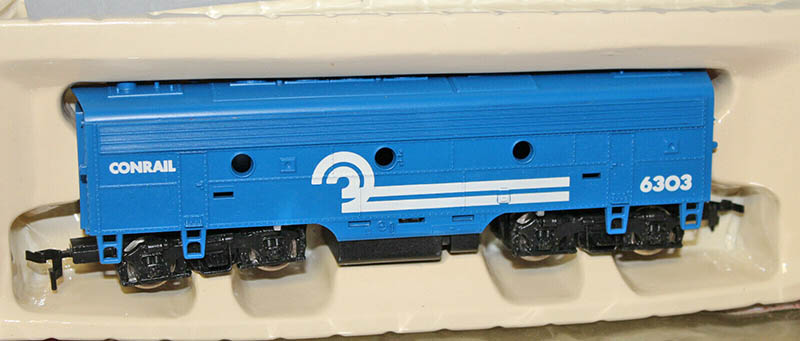
ABOVE: A second-generation (1977-2001) Mantua F7B was offered in full Conrail livery. The road operated F3B and F7B, but none saw blue makeover like this HO model.
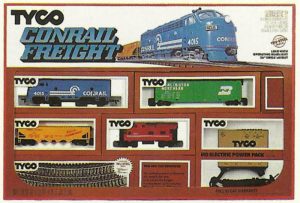 For HO model railroading enthusiasts, the story of Conrail F-units was dramatically different from the prototype history. The 1970s was a boom period for HO scale and several companies joined in the “train set” or entry-level segment of the hobby and then-new railroads (such as Amtrak, Chessie System, Illinois Central Gulf) including Conrail enjoyed a solid amount of manufacturer attention. Among the fully decorated Conrail F-units, you will find Life-Like, Mantua, Model Power, and TYCO produced examples in the 1970s and early 1980s. In addition to A-units, complete Conrail livery saw application on B-units. In reality blue Conrail F-units were elusive and fully lettered examples did not exist, there were several for HO operators to add to their rosters.
For HO model railroading enthusiasts, the story of Conrail F-units was dramatically different from the prototype history. The 1970s was a boom period for HO scale and several companies joined in the “train set” or entry-level segment of the hobby and then-new railroads (such as Amtrak, Chessie System, Illinois Central Gulf) including Conrail enjoyed a solid amount of manufacturer attention. Among the fully decorated Conrail F-units, you will find Life-Like, Mantua, Model Power, and TYCO produced examples in the 1970s and early 1980s. In addition to A-units, complete Conrail livery saw application on B-units. In reality blue Conrail F-units were elusive and fully lettered examples did not exist, there were several for HO operators to add to their rosters.
Due to space limitations, Model Railroad News‘ April 2021 print edition was not able to include “From the Archive.” This Conrail-themed web version is provided online in its place. “From the Archive” will return in May 2021’s Amtrak-themed edition of Model Railroad News.


